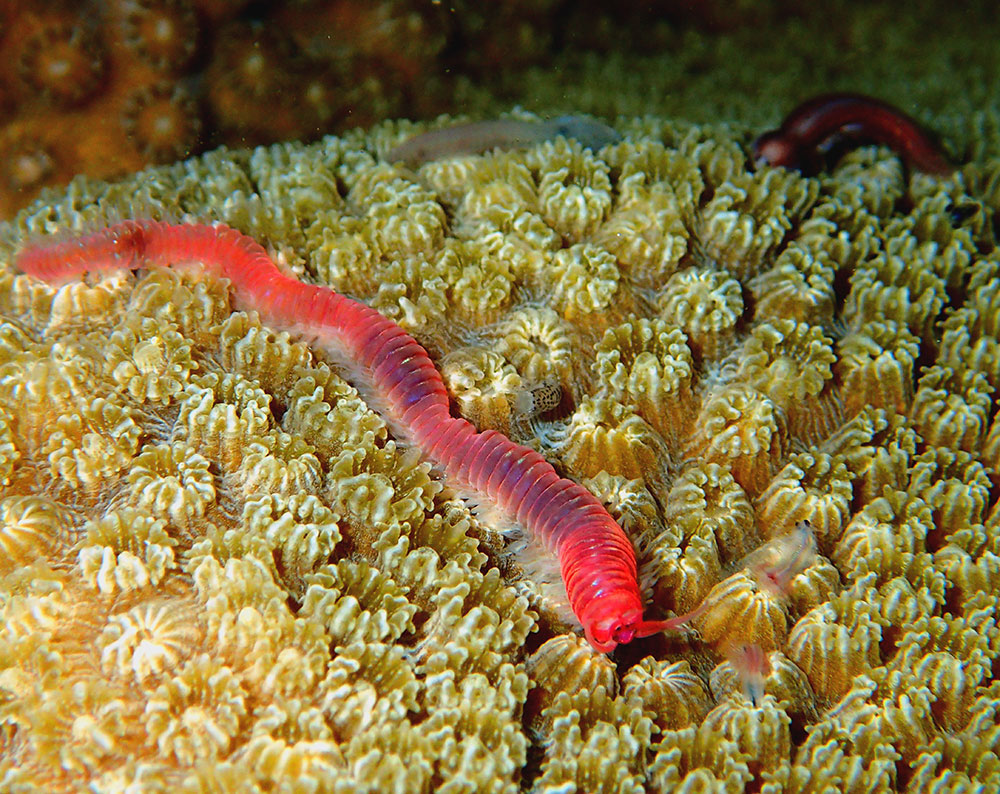PYGMY FILEFISH – IUCN Conservation Status: LEAST CONCERN The pygmy filefish and the green feather algae are almost the exact same color! This is yet another photo from Blue Heron Bridge in West Palm Beach, Florida. Diving here is like playing underwater Where’s Waldo. There are lots of cryptic creatures that camouflage with the seafloor. Some practice mimicry, […]
Longarm Octopus
ATLANTIC LONGARM OCTOPUS – IUCN Conservation Status: LEAST CONCERN The longarm octopus can change their color and texture! Can you find the octopus? The eyeball is in the center of the photograph. Once you find the eye, the rest of the octopus appears. As the name suggests, the longarm octopus are known for their long arms. Their arms can […]
Long-Snouted Seahorse
LONG-SNOUTED SEAHORSE – IUCN Conservation Status: DATA DEFFICIENT This long-snouted seahorse may be pregnant! It’s odd to think of seahorses as “fish”, but these ornate creatures are indeed a species of fish. However, unlike a lot of fish, seahorses are not good swimmers. They do have fins and are able to swim, however they rely on the […]
Lined Flatworm
An interesting fact is that lined flatworms can reproduce two ways This interesting marine invertebrate is called a lined flatworm. Although you will also see these called tiger flatworms or Crozier’s flatworm (Pseudoceros crozieri). Although it may look big in this photo, this creature is only one inch long! They are known to live in […]
Blackwater Photo of a Juvenile Filefish
SLENDER FILEFISH – IUCN Conservation Status: LEAST CONCERN Blackwater photography is unique because everything you are shooting will typically be within an arm’s reach. I believe this blackwater photo to be of a juvenile filefish. It is only about one to two inches long! This photo was taken during a blackwater night dive off the […]
Bloodworm
BOULDER STAR CORAL – IUCN Conservation Status: LEAST CONCERN Bloodworms get their color from the hemoglobin it its body fluid This vibrant red worm gets its color from the hemoglobin in its body fluid. The bloodworm’s mouth is exposed, and if you look close you can even see the four antennae. These bottom dwelling worms […]
Alligator Gar
ALLIGATOR GAR – IUCN Conservation Status: LEAST CONCERN Alligator gars are “living fossils” What am I looking at? This strange shaped fish is named after what it looks like, an alligator. It is in fact a fish. However, this fish can breathe both air and water! In addition, this type of fish is actually able […]
American Lobster
The American Lobster resonates with vibrant colors When I took this photo, my hand’s were as cold as can be. Matt and I were diving off the coast of Maine near the Nubble Lighthouse, and the water temperature was about 42 degrees. I myself am susceptible to the cold, especially in my digits. My fingers […]
Dwarf Seahorse
The dwarf seahorse is the “slowest-moving fish”! Seahorses rely on camouflage as their primary form of survival. As if sea horses weren’t hard enough to find already, there is a type of seahorse called a “dwarf seahorse”. To find these, you need a sharp eye, patience, and luck. This photo is a dwarf seahorse that […]
Fingerprint Cyphoma
Fingerprint cyphomas eat sea fans and sea whips “What am I looking at?” That is usually what people think when they see a fingerprint cyphoma. What is a fingerprint cyphoma? These are about one-inch long gastropods. Think of them like underwater snails. Many divers are familiar with a similar marine gastropod, the flamingo tongue. Fingerprint […]









